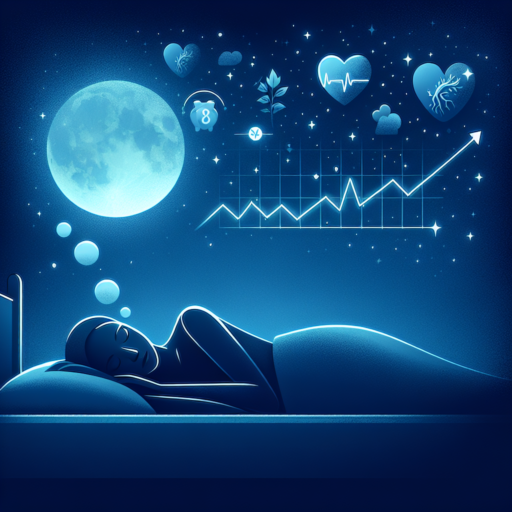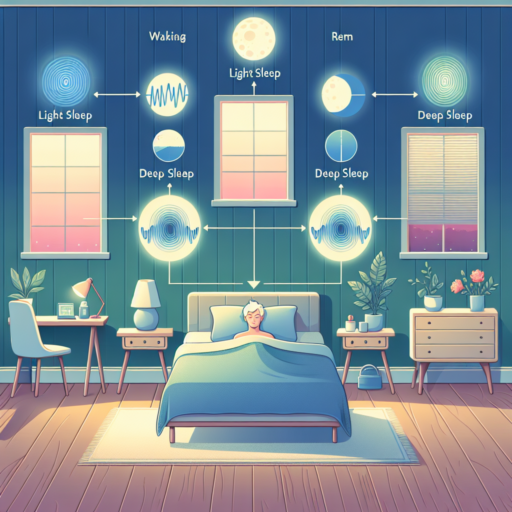What is a good overnight HRV score?
Understanding your overnight Heart Rate Variability (HRV) score is crucial for gauging your body’s readiness and overall health. But what numbers should you be aiming for? A «good» HRV score varies significantly among individuals, influenced by factors such as age, gender, fitness level, and genetics. Generally, a higher HRV indicates better autonomic nervous system balance, recovery, and stress resilience.
An average HRV score for healthy adults can range anywhere from 20 to 100 milliseconds (ms). However, for a more personalized insight, it’s essential to compare your data against your own baseline rather than societal norms. An upward trend over time is typically a sign of improving cardiovascular fitness and reduced stress levels. Remember, consistency in monitoring your HRV is key to identifying what is ‘good’ for you.
To further understand your HRV readings, consider incorporating lifestyle factors and note how they correlate with changes in your score. For instance, observing how your HRV fluctuates in relation to exercise, stress, sleep quality, and diet can provide actionable insights into managing your well-being more effectively.
What is a low HRV during sleep?
Understanding Heart Rate Variability (HRV) is crucial for those looking to optimize their health, especially as it relates to sleep quality. A low HRV during sleep signals less variability between heartbeats, indicating that your body may be under stress or failing to recover properly. This metric is essential, as it reflects the health of the autonomic nervous system and its ability to maintain balance between rest and activity states. Essentially, a higher HRV suggests a resilient and flexible system, whereas a lower HRV points to stress, fatigue, or underlying health issues.
During sleep, your body goes through several stages, including light sleep, deep sleep, and REM sleep. Each stage plays a pivotal role in recovery and overall health. A low HRV during sleep can suggest that your body is not efficiently transitioning through these crucial stages. This inefficiency can result in poor sleep quality, lessened recovery, and increased feelings of tiredness upon waking. It’s during the deep sleep stages that HRV typically increases, indicating restorative processes and reduced stress levels. Therefore, a consistently low HRV could signal disruptions in these beneficial sleep cycles.
Various factors can contribute to a low HRV during sleep, including stress, lifestyle choices, and even environmental factors. Activities before bedtime, such as exposure to blue light from screens, consuming caffeine or heavy meals, and psychological stress, can all negatively impact HRV. To monitor and improve HRV, individuals can leverage wearable technology to track their sleep patterns and make informed decisions about their nighttime routines. Understanding the nuances of HRV and its implications on sleep health is a vital step towards achieving optimal wellbeing and resilience against stress.
What is good HRV by age?
Understanding Heart Rate Variability (HRV) is key to assessing stress and overall health, but it’s crucial to consider how age impacts what is considered a ‘good’ HRV. HRV measures the variation in time between each heartbeat, and this metric can tell us a lot about our autonomic nervous system. Generally, a higher HRV indicates better cardiovascular fitness, a more resilient stress response system, and overall better health. However, age plays a significant role in determining the optimal HRV levels.
For younger individuals, specifically those in their 20s and 30s, the expected HRV can vary widely but tends to be higher due to the greater resilience and flexibility of their cardiovascular systems. As we age, our HRV generally decreases, reflecting changes in the autonomic nervous system’s function and often correlating with decreased cardiovascular fitness. Therefore, benchmarking ‘good’ HRV must be adjusted to reflect these physiological changes across different age groups.
In middle-aged adults, from their 40s to early 60s, a good HRV may reflect a slightly reduced average compared to younger individuals, still indicating healthy cardiovascular function and stress management capacity. It’s in these age brackets that lifestyle factors such as diet, exercise, and stress management become increasingly crucial in maintaining or improving HRV. For seniors, those in their late 60s and beyond, maintaining a stable HRV within a lower range than their younger counterparts can still signify good heart health and autonomic function, albeit at different standards.
No se han encontrado productos.
Is 30ms a good heart rate variability?
Understanding the nuances of heart rate variability (HRV) is essential in assessing individual health and fitness levels. HRV measures the time variation between consecutive heartbeats and is a vital indicator of the autonomic nervous system’s resilience and flexibility. When evaluating whether a 30ms heart rate variability is considered good, it’s crucial to consider the context of this metric.
Factors Influencing HRV
The interpretation of a 30ms HRV can vary significantly depending on a range of factors. Age, fitness levels, stress, sleep quality, and even genetics play a role in determining what can be considered a «good» HRV for an individual. For athletes or highly active individuals, a 30ms HRV might indicate a state of under-recovery or high stress. Conversely, in less active populations or those in older age groups, this same figure might fall within expected ranges.
Understanding Personal Baselines is paramount when assessing HRV figures like 30ms. Comparing your HRV to population averages without considering personal factors and baselines can lead to misinterpretation of what is healthy or optimal for you. HRV is highly individualized, and its assessment should be personalized and monitored over time to understand trends rather than making snap judgments based on isolated readings.
HRV and Overall Health
A 30ms HRV, while a specific figure, does not provide a complete health assessment on its own. It’s a piece of the puzzle in understanding autonomic nervous system function and overall well-being. Health professionals often advise combining HRW observations with other health indicators and lifestyle factors to gain a comprehensive view of one’s health status.
In essence, whether a 30ms HRV is deemed good depends on various individual factors and should be interpreted with caution and context. Continuous monitoring and professional guidance are recommended to derive meaningful insights from HRV readings, including those around the 30ms mark.




